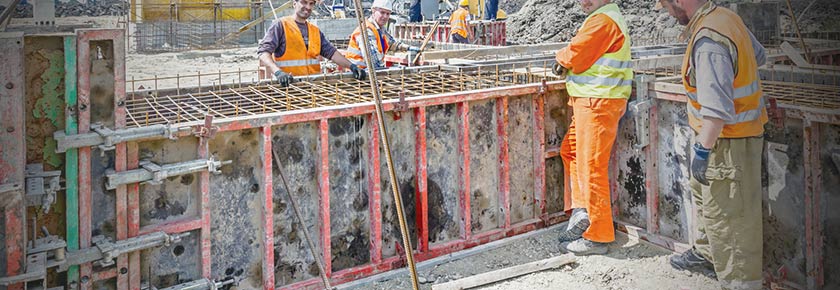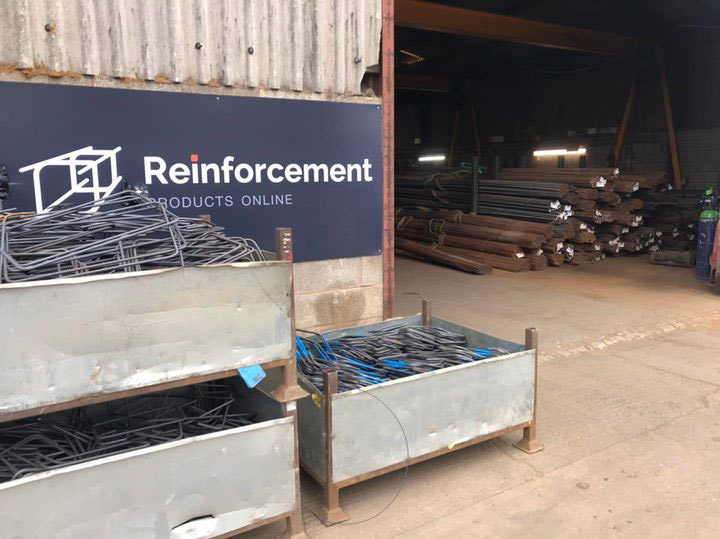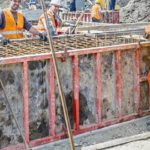We use cookies to make your experience better. To comply with the new e-Privacy directive, we need to ask for your consent to set the cookies. Learn more.
Capping Beams Explained

A capping beam, as the name suggests, caps piled foundations to increase the rigidity of the foundations and reduce movement. But how are they constructed? And what other benefits do they provide? Read on for more info.
Designing the right foundations for any building is a complex and careful process, which needs to take into account many factors, including the superstructure design, forecast slab loadings, ground conditions, site access and proximity of other buildings. Finding a practical and cost-effective solution that will work under the specific conditions you have identified for your site isn’t always a straightforward task, and it’s vital to have a solid understanding of all types of foundations, and their use cases, to make the right choice. In this article, we take a look at capping beams, and how they play a key role in projects that rely on pile foundations.
What Are Capping Beams?
To understand what a capping beam is and how it works, we first have to look at pile foundations. These are deep foundations that are constructed of long slender columns of reinforced concrete, and to be classed as pile foundations they need to be a minimum of three times deeper than their width. Pile foundations are used to transfer the superstructure load through weak or unsound subsoils, or even water, down onto more solid soil or rock. Piles can be driven or bored, and can go down to a considerable depth of many tens of metres, if required (read more about CFA piling here).
To link piles together, a reinforced concrete cap is used, and from there, these pile caps can also be linked together using a capping beam.
Capping beams can also be used to spread the weight of a load-bearing wall across multiple pile caps, or to spread the weight of superstructure columns across a line of piles.
How Are Capping Beams Constructed?
To create a capping beam, a minimum of three capped piles are required. A reinforced steel cage is constructed to fit over the top of the pile caps, and this is then filled with sprayed or poured concrete. Once the concrete is dry, formwork can be removed.
Where significant subsoil shrinkage is predicted, the capping beam can be cast onto a layer of polystyrene or a similar compressive material, which will allow for both swelling and shrinkage of the subsoil, without damage to the capping beam.
The design of the capping beam, and the associated layout of the piles it is joining should take into account the forecast loadings of the superstructure, to ensure the structural integrity of both the piles and the capping beam. 3D simulations are typically used to make the necessary calculations and model the required piles and capping beam.
Here's a brilliant video by Siteng explaining the process on-site:
How Do Capping Beams Differ From Ground Beams?
Whilst they share many similarities, capping beams and ground beams are very different construction elements. A ground beam is positioned between pile caps in order to provide increased stability of the foundation, whereas a capping beam is used to join pile caps together.
When Are Capping Beams Used?
As previously mentioned, capping beams are used to tie pile foundations together, and as such, they are typically only found in construction projects that either require extremely deep foundations because of the size and loading of the superstructure, or where the ground conditions mean that the surface subsoil is not structurally sound enough to take shallow foundations. Examples include high-rise buildings in tight urban sites, and infrastructure projects such as roads and motorways. Pile foundations and capping beams are also typically used when a construction project has to go down through water in order to reach solid rock to install the foundations.
To find out more about the construction of capping beams, and the steel reinforcement products needed, contact us today. Our expert team can offer advice and guidance on designing and constructing the steel cages needed to build the capping beams required by your design.

Looking for Steel Reinforcement?
Look no further. Competitive Rates, Experienced Team, Rapid Delivery.
Of course, if you need any guidance or advice on the correct rebar or mesh products for your next construction project, just get in touch with us today for a chat with a member of our friendly and experienced team.





